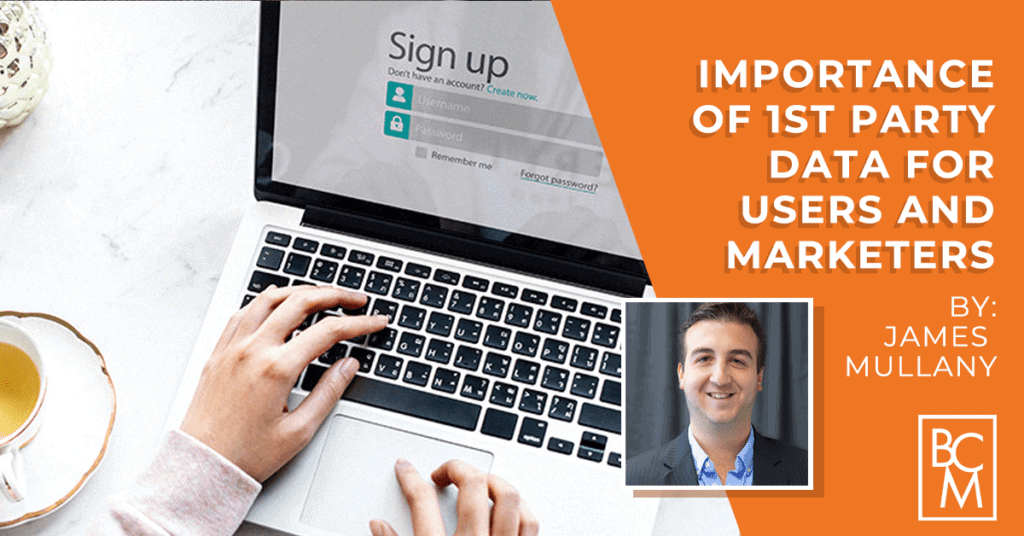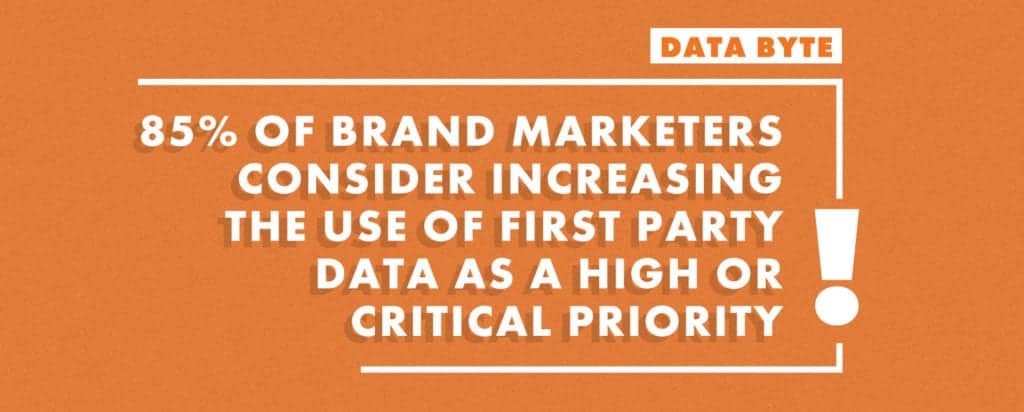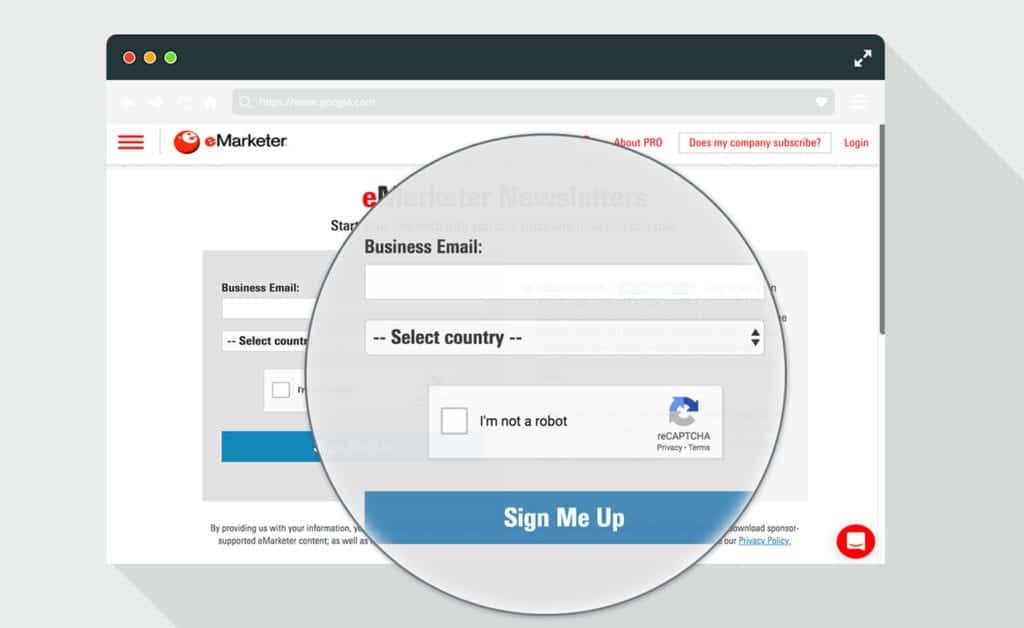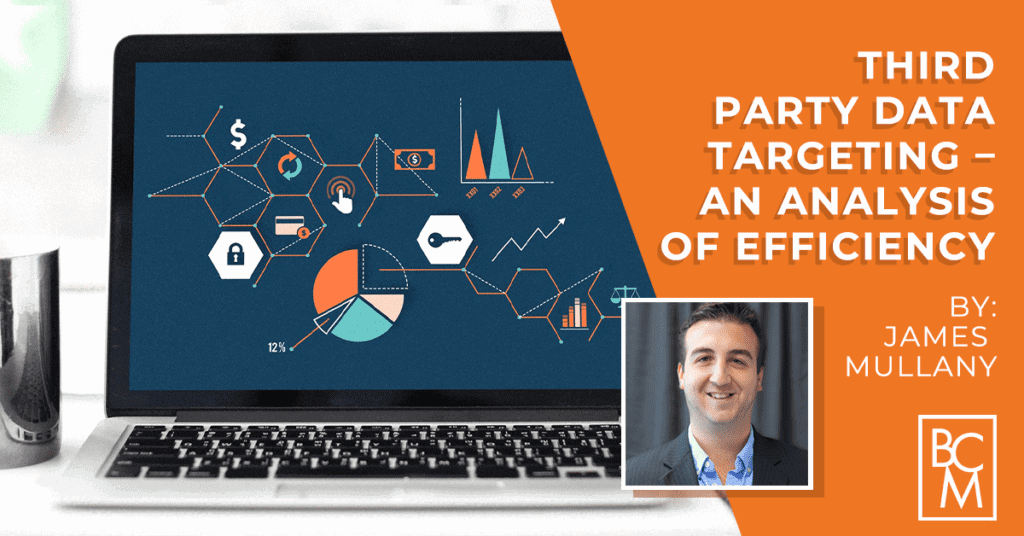

By James Mullany
Data privacy is rapidly changing at the individual publisher, platform and legislative level. Some changes are widely covered in the press, such as GDPR and Cambridge Analytica. But others, such as Apple’s ITP restrictions or Google Chrome’s built-in ad blocker are just as impactful with limited coverage in the press. With each change that is made, there is a consistent theme: individuals are gaining increased control of their own data. If a brand is too reliant upon external relationships through data providers and/or platforms, each policy adjustment will impact the brand’s business results. To combat this trend, brands are increasing the collection and usage of 1st party data for more efficient targeting and relying less on 3rd party data.

We recently provided an overview of the differences between 1st, 2nd and 3rd party data. 1st party data is the crown jewel of data sets due to its high-quality composition. 1st party data is often unique to your brand, allowing the flexibility for segmentation, targeting and application to marketing and analytics. Building segments from first party data is also the foundation of competitive separation and advantage. 1st party data examples include the following:
1. Website browsing and purchase history (Cookie, user ID)
2. In-store shopping data
3. Consumer Survey
4. Email, social media and marketing interactions
Disconnected legacy data sources and limited investment in marketing technologies make 1st party data management and activation seem unattainable. As a first step towards activating 1st party data, brands began using Customer Relationship Management (CRM) tools. CRM tools were created and designed to manage a channel or set of channels, such as email and direct mail, but are often limited to those channels. One level up from a CRM program is a Customer Data Platforms (CDP). CDP’s enable broader application, bringing precision and unification to customer data across multiple channels, business units and data sources. Companies offering CDP solutions are growing. According to the Customer Data Platform Institute, the number of CDPs doubled from 2017 to 2018, and there are now more than 50 CDPs in MarTech Today’s industry landscape. In both cases, CRM and CDP’s allow you to properly manage and re-engage with an audience that has already expressed an interest in your brand or product. These audiences are highly valuable and are often the likeliest to move from a prospect to a buyer and ultimately, a promoter of your brand.

How Do You Start Collecting First Party Data?
You may be asking yourself – where should I begin? Start with email collection due to its accessibility and accuracy. There are many software tools of varying capabilities (and costs) that create a seamless process of collecting and managing emails through your website. An email increases the likelihood that you will win subsequent purchases, taking that customer out of competitive circulation. Email data is rather flexible and can be used for predictive modeling in addition to immediate communication. The top advertising platforms, including Google and Facebook, use email as their primary customer identifier permitting custom audience development and look-a-like modeling within social, search, display and video opportunities.
If you have a website but are not already using 1st party data and not collecting email, you should at the very least consider placing Google and Facebook audience pixels on your website. These will allow you to retarget users that have been to your website but have not returned over a defined time period. This will also allow you to build look-a-like audiences of highly relevant and qualified prospects. More sophisticated marketers add research pixels to their websites enabling them to overlay attitudinal, behavioral and values-based data to gain rich insights into who is engaging with their brand.
If you have yet to begin collecting or using email, consider partnering with SalesForce, HubSpot, ConstantContact or MailChimp, to name a few. These partners offer varying solutions and pricing tiers to solicit, collect, classify, distribute and manage email marketing programs. Once the email is captured, it is our job as a marketer to expose this prospective customer to a curriculum designed to produce a buyer and brand promoter.
BCM is a partner with many of the leading global data management platforms, such as Krux-SalesForce, and can assist your marketing team with designing, implementing, managing and activating a successful customer centric marketing program leveraging 1st party data.

The Marketers Guide To First Party Data
First Party Data: The Ultimate Guide for Marketing & Advertising Your company is at risk of losing customers and sales to the competition.

